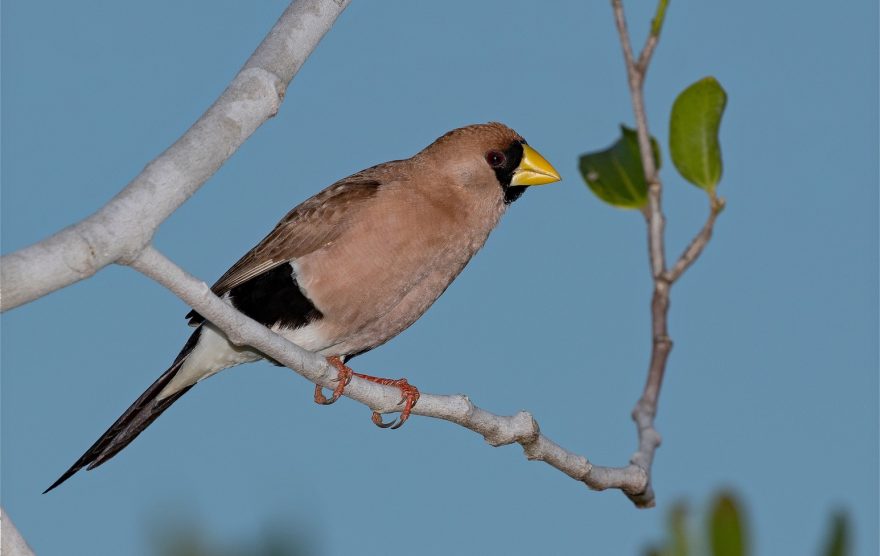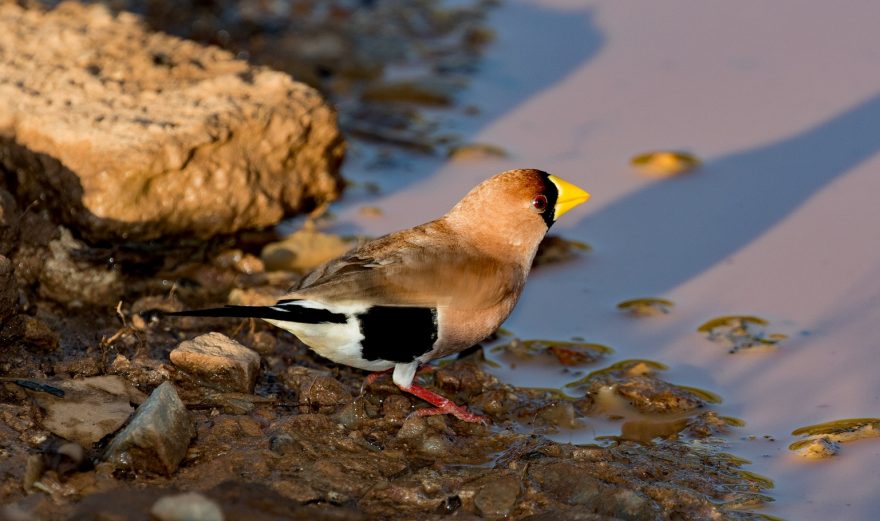The Masked Finch is medium-sized grass finch endemic to Australia’s dry northern savanna. There are two subspecies recognized; the nominate “normal” form (Poephila personata personata), and a less-common white-earned form (Poephila personata leucotis). The species are uncommon in aviculture, but the captive population is considered secure.

Housing & Compatibility
Masked finches can be housed successfully as single pairs, a colony, or as part of a mixed collection. They prefer a large planted aviary, but are generally tolerant of smaller aviaries or even a large flight cage. Some breeders find they perform better when housed in small groups of 2-3 pairs.
Masked finches will interbreed with other birds in the Poephila genus (Black-throated finches and Long-tailed finches) and produce worthless hybrids. These species must be housed separately.
They have a strong preference for large planted aviaries and enjoy hiding in long grasses.
Masked finches are generally very placid in a mixed aviary situation. They can be successfully housed with most placid finches, quail, doves, and (space permitting) Neophema parrots.
Diet & Feeding
A quality seed mix including canary seed, various millets and panicum forms the basis of the Masked finch’s diet. Seed lacks many essential vitamins and minerals which must be compensated for by introducing other foods. Sprouted seed increases the nutritional value of seed and is a cheap way to improve your birds health. Freshly grown green seed heads should also be offered frequently.
Leafy greens such as kale, bok choy, endive and silverbeet are in important part of the Masked finch’s diet. Spinach can also be given, but only sparingly as it can contribute to calcium deficiency.
Live food will be consumed during the breeding season. Small mealworms, maggots, and termites are most frequently given. Commercial softfoods—such as egg and biscuit mix—are especially loved by Masked Finches.
Do not feed anything from the list of forbidden foods.

Breeding
Masked finches breed best in spring and autumn, with a hen bird that is at least 12 months of age. They can be fussy about mate selection, so allowing pairs to form naturally will likely result in better breeding results. Pair bonds are strong. After the death or replacement of a mate, it may take some time for the remaining bird to accept a new partner.
They typically lay 4-6 eggs in each clutch, which are incubated by both parents for approximately 14 days. Young birds fledge the nest at three weeks of age and are usually independent a month later. Young birds can be left with their parents without issue.
A wide variety of artificial nests will be accepted, though they have a preference for a dense shrub just above ground level. They will construct a dome-shaped nest from fine strands of dry grass. Masked finches demand privacy to breed successfully and will not tolerate nest inspections.
Sexing
Masked finches can be difficult to accurately sex, so DNA sexing may be required.
Experienced keepers may be able to visually sex birds with a decent level of accuracy. Hens are usually slightly smaller than males. Males have slightly larger black masks on their face and their plumage is a slightly richer brown color.
Mutations
Some mutations have been developed for this species—notably white and fawn—however they’re exceedingly rare.
Health
A strict worming and parasite control regime is essential to ensure the long-term health of any finch collection. Masked finches can be expected to live for 7-10 years.
Masked finches will spend a lot of time foraging for insects on the aviary floor, making them more susceptible to parasites and diseases that spread via droppings. Regular cleaning and preventative healthcare is a must.
Do both sexes of the masked grass finch sing